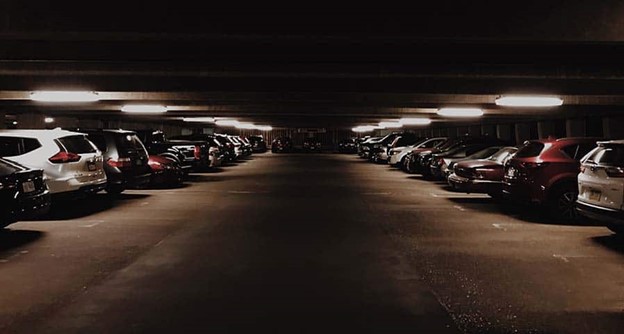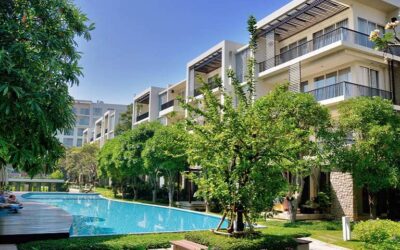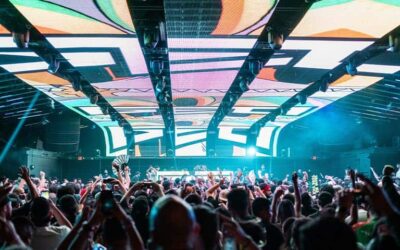As experts, Action Services Group often fields questions regarding where to start when it comes to Light Emitting Diode (LED) lighting retrofits. We understand that an LED lighting retrofit project comes with a lot of questions, uncertainties, and concerns. Below, we explain the best place to start, as well as the top 3 goals you should consider when it comes to retrofitting lights.
You Have to Start Somewhere
An LED lighting retrofit project can seem like an enormously daunting task. This is especially true for locations that have many different lighting needs, as well as a plethora of fixtures that will need to be updated.
Prioritization should be the rule of thumb when dealing with a full retrofit. One of the first things experts will tell you is to replace are halogen and incandescent lighting. But why is that?
Incandescent lamps are the least energy-efficient of any type of lighting. Halogen lamps, however, are only slightly better. In fact, when compared to incandescent lighting, halogens save you only 40% on your energy expenses. (For the record, when compared to incandescent lighting, fluorescents save roughly 75% and high-intensity discharge (HID) save up to 85% on energy costs.) LED lights exceed the savings seen with all other forms of lighting. In fact, on average, LED fixtures can cut your energy consumption by up to 90% when compared to incandescent lighting.
Because of this drastic reduction in energy costs, you see the largest return on investment (ROI) when replacing incandescent or halogen lamps and fixtures with LEDs. This means the ROI from your retrofit lights can pay down the expenses of the installation quickly, therefore generating savings in half the time.
There are still many different types of lighting used in the commercial market today. Chances are with a larger facility, you are using several different lamp types right now. We have written an entire series of articles explaining your lighting performance, maintenance, and energy savings based on the types of lighting being retrofitted. You can check out the entire LED vs. Other Lamps series here.
Top 3 Savings Goals of an LED Lighting Retrofit Project
Ultimately, you are considering an LED lighting retrofit for a specific reason. Perhaps you have been cited for safety violations or you are tired of high energy bills. Regardless, understanding which fixtures should be replaced first by an LED is just the tip of the iceberg. Below, the experts with Action Services Group help to fully explain what the top 3 goals of any lighting retrofit are. This can help you further understand which areas should be the primary targets of an LED lighting retrofit.
Increasing Efficiency Means Reducing Costs in General
LED lights are, hands down, the most efficient type of lighting you can invest in today. But that is not the only way they help to save you money.
Lighting expenses are a cumulation of energy costs, maintenance, and labor. LED lighting can help you save on all three.
- Energy Costs: We have already talked about energy efficiency when comparing various types of lighting fixtures. But did you know that energy consumption alone accounts for 77% of the cost of your lighting? That means by reducing your energy consumption not only saves you money on your power bill, it also helps to cut costs associated with your lighting in general.
- Maintenance: LED fixtures are also known for their extremely long lifespan. In fact, many LED lights are expected to last up to 50,000 hours. (Compared to an incandescent lamp, LEDs last almost 50 times longer!) Even if used for up to 12 hours a day, a LED fixture is expected to last at least, 11 years, if not more. This means you replace LEDs much less than you would incandescent lamps. Furthermore, LED lighting is considered exceptionally durable. Unlike incandescent and halogen lamps, LED models can withstand shocks, vibrations and surges that older technologies would be damaged or destroyed by. This means they are less likely to break and need repair or replacement prior to the end of their lifespan.
- Labor: On average, the labor rates associated with maintenance of lamps and fixtures accounts for 11% of the overall value of your lighting. Because you must change them less often, LED lighting reduces this cost substantially. Less time spent fixing lights means less money spent maintaining them.
At the end of the day, it should be clear: LED technology saves money wasted by older technologies, such as incandescent or halogen lighting.
Focus on Constantly Lit Spaces
Are there areas within your facility that require lighting 24 hours a day, 7 days a week? LED lighting retrofits in these areas are a great way to begin immediately saving on energy consumption.
Areas, such as parking lots and garages, lobbies, elevator landings, and stairwells, are considered constantly lit spaces. The energy consumption in these regions is continual and, therefore, a cost you cannot dismiss. By replacing outdated technologies in these areas with energy-efficient LEDs, you can cut these expenses immediately.
These constantly lit areas also tend to burn through lamps faster. This means their maintenance and labor costs are much higher than in other areas on your property. But, again, by replacing these fixtures with LED technology, you can cut both these costs substantially.
Furthermore, because of the fragile properties associated with older lighting technology, you may find lamps become damaged or destroyed more easily in these areas. (Parking lots and garages, for example, experience constantly varied shocks and vibrations as different sized vehicles drive through them. This can cause incandescent or halogen lights to prematurely go out.) Because of this, maintenance may not be performed immediately. This can create safety concerns for those who occupy or use these areas. It may also lead to a potential increase in crime as lighting is considered a primary deterrent to theft and vandalism.
Consider Areas Where Maintenance is Toughest
Do you have areas where lighting maintenance is difficult or requires special equipment or components? These areas typically result in one of two things: increased labor rates or sub-par maintenance. This is because areas where maintenance is hard typically require maintenance personnel to take longer. If there are other higher priority areas that require maintenance, personnel may not have the time to address issues with this lighting, which means it remains damaged longer.
If special equipment is needed, this can be another issue. This may mean that maintenance workers must come in, after hours, to address fixture needs. Not only will your employees or occupants have to make do with inadequate lighting during this time, but you will also likely have to pay overtime to your maintenance workers as well. (You also have to consider the fact that inadequate lighting is known to contribute directly to reduced productivity for employees, as well as creating unsafe working conditions.)
Furthermore, these areas may require specialized lighting replacements, which typically cost more and may take longer to receive based on inventory levels and production timelines.
Typically, any location with high ceilings, like a warehouse or distribution center, is going to have higher maintenance costs due to needing specialty equipment like a lift. For facilities with those types of areas, try reading: LED Benefits for Distribution Centers and Warehouses, and Warehouse Lighting Best Practices for 2020.
LED Lighting Retrofits with Action Services Group
If you would like to learn more about how to pursue or prioritize an LED lighting retrofit, Action Services Group can help. Contact us today for more information. Call 610-558-9773, email [email protected], or schedule a call.







































0 Comments